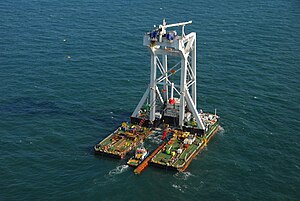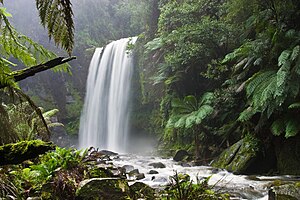Friday, October 29, 2010
Thursday, October 28, 2010
Zealandia - just ten minutes downtown from central Wellington - New Zealands capital city...
http://ecospree.com/
Visit Zealandia while you are in Wellington: http://www.visitzealandia.com/site/zealandia_home/
Discover ZEALANDIA: New Zealand's ultimate nature experience
A paradise that took 80 million years to evolve was almost destroyed in the last few hundred...
Just 10 minutes from central Wellington, ZEALANDIA is a unique eco-attraction. New Zealand's incredible natural history and our world-renowned conservation movement are brought to life with a state-of-the-art indoor exhibition.
Then step through our predator-proof fence into our beautiful 225ha (550 acre) eco-sanctuary for your best opportunity to see some of New Zealand's rarest birds, reptiles and insects in the wild.
ZEALANDIA is open daily 10am-5pm
One of 33 things to not miss in New Zealand ."
Zealandia Wildlife Reserve
http://www.visitzealandia.com/site/zealandia_home/
Wellington
New Zealand
+64 4 920 9200 begin_of_the_skype_highlighting +64 4 920 9200 end_of_the_skype_highlighting
Contact ZEALANDIA

Labels: New Zealand, Oceania, Oceania., Wellington, Wildlife refuge, Zealandia
Sunday, October 24, 2010
World's largest Offshore Windfarms begun by China...
 Image via Wikipedia
Image via WikipediaWorld’s Largest Offshore Wind Farm Begun by China
China, which shot to world leadership in turbine production after passing renewable energy legislation (together with local construction mandates) in 2005, has begun building the world’s largest off-shore wind farm in Bohai Bay, a few hours from Beijing. The engineering design and construction of what will be the world’s largest offshore wind farm at 1,000 MW, according to Ordons energy news, is being undertaken by the state-owned China National Offshore Oil Corporation (CNOOC),
It is not that unusual for offshore oil to develop offshore wind technology. The two share some of the same technical and engineering issues. Stat-Oil in Norway is also investing in offshore wind development, because many of the engineering solutions found to develop offshore oil, are also applicable to the development of offshore wind, like building platforms in deep sea.
Once complete, in 2020, the Bohai Bay wind farm, just three hours from Beijing, will be the largest off-shore wind farm in the world, at 1,000 MW. The current world’s largest offshore wind farm in Europe just started sending power to the grid in September from a 300 MW array of turbines in the North Sea.
To build the massive infrastructure needed, nearby Tianjin has received an investment of $2.2 billion from the Chinese government. The potential is for a staggering 750 Gigawatts of offshore wind power off the coast of China, more than twice the potential 330 GW off the Atlantic coast of the US, which itself would power the East Coast twice over.
Above Image: Offshore oil equipment in Bohai Bay
Acknowledgements: Susan Kraemer
http://ecospree.com/
Labels: Beijing, Bohai Bay, China, China National Offshore Oil Corporation, East Coast of the United States, List of offshore wind farms, Watt, Wind farm
Monday, October 18, 2010
Ten years to solve nature crisis, UN meeting hears
 Image via Wikipedia 'Ten years' to solve nature crisis, UN meeting hears...
Image via Wikipedia 'Ten years' to solve nature crisis, UN meeting hears...Environment correspondent, BBC News, Nagoya, Japan
Delegates will consider adopting new set of targets for 2020 that aim to tackle biodiversity loss The UN biodiversity convention meeting has opened with warnings that the ongoing loss of nature is hurting human societies as well as the natural world.
The two-week gathering aims to set new targets for conserving life on Earth.
Japan's Environment Minister Ryo Matsumoto said biodiversity loss would become irreversible unless curbed soon.
Much hope is being pinned on economic analyses showing the loss of species and ecosystems is costing the global economy trillions of dollars each year.
Ahmed Djoghlaf, executive secretary of the UN Convention on Biological Diversity (CBD), described the meeting in Nagoya, Japan, as a "defining moment" in the history of mankind.
Is wildlife being eaten to extinction?
"[Buddhist scholar] Daisetsu Teitaro Suzuki said 'the problem of nature is the problem of human life'. Today, unfortunately, human life is a problem for nature," he told delegates in his opening speech.
Referring to the target set at the UN World Summit in 2002, he said:
"Let's have the courage to look in the eyes of our children and admit that we have failed, individually and collectively, to fulfil the Johannesburg promise made by 110 heads of state to substantially reduce the rate of loss of biodiversity by 2010.
Read more here: http://www.bbc.co.uk/news/science-environment-11563513
http://ecospree.com/

Labels: Ahmed Djoghlaf, Biodiversity, Central business district, Convention on Biological Diversity, environment, Nagoya, United Nations
Sunday, October 17, 2010
Fonterra to use a 'green' solution to help cut emissions from its milk truck fleet
 Image via WikipediaFonterra, New Zealand's largest company and about the sixth largest dairy company in the world, will use a urea-based solution made locally to help cut emissions from its large fleet of milk trucks.
Image via WikipediaFonterra, New Zealand's largest company and about the sixth largest dairy company in the world, will use a urea-based solution made locally to help cut emissions from its large fleet of milk trucks. Ballance Agri-Nutrients last week launched GoClear, which will be made at its Kapuni ammonia-urea plant.
The liquid is held in a small tank and injected into the exhaust system of diesel engines where it reacts with gases as they pass through a catalytic converter, turning nitrogen oxide emissions into water vapour and nitrogen.
Ballance chief executive Larry Bilodeau said nitrogen oxide was a potent greenhouse gas and the solution could help reduce typical truck emissions by between 70 and 90 per cent.
Ballance said new and used trucks coming into New Zealand would have to meet Euro 5 emission standards from January 1 and bigger trucks would have to use selective catalytic reduction (SCR) technology to meet this.
Fonterra chairman Sir Henry van der Heyden said the company travelled about 75 million kilometres each year collecting milk from farms.
"Today our customers, our consumers want to have a lot more confidence in the way that food is actually produced," van der Heyden said.
"The issue around sustainability gets talked about a hell of a lot more than what it actually has done in the past."
Fonterra procurement category manager Guy Cooper said the company would have a fleet of 480 milk collection trucks by the end of November, including 113 using SCR technology.
Fonterra chose supplier Orica to provide the additive for its trucks mainly because that company had an existing distribution network onto Fonterra's sites.
"The other reason was that when we got started with them we said, 'Well look, we really want to work with a company that can develop a New Zealand solution,"' Cooper said.
Fonterra's entire fleet could be using SCR-type trucks within about five years.
Orica at present imported a product from Korea but when stocks were used up it would begin supplying GoClear made by Ballance.
Urea accounted for 32 per cent of the solution by volume, with the rest made up of water, Cooper said.
"If you think about it it's not very sustainable shipping demineralised water from Korea," he said.
Fonterra would use about 475,000 litres of solution this season and the cost of using it netted off about level with the fact that SCR trucks ran leaner.
"So we're not really going to put a lot of money into our back pocket but it is more about being a responsible corporate user of fossil fuels."
Acknowledgements: Owen Hembry
http://ecospree.com/
Labels: Fonterra, Guy Cooper, Kapuni, Korea, New Zealand, Orica, Selective catalytic reduction, Truck
Monday, October 11, 2010
Will incandescent bulbs go away?
 Image via Wikipedia
Image via WikipediaWill Incandescent Bulbs Go Away?
The “last major GE factory making ordinary incandescent bulbs in the United States” is set to close later this month. Most incandescent bulbs will be banned from sale in the US in 2014, and many other countries have enacted similar bans on incandescent bulbs within the next few years, as well. But while the deadline has been set, and the manufacture of incandescent bulbs is set to end in a couple of years, there is a growing market for specialty incandescent bulbs.
Against all reason though, bare filament light bulbs are spreading as a trendy fashion in restaurants, as was noted in the New York Times earlier this summer:
…they hover in groups of two and three. …they snake through the cafe, restaurant and patio. …they cluster near the entrance as an enticement.
They are not the latest cliques of beautiful people, but something quite old and plain: exposed-filament bulbs, energy-guzzling reproductions of Thomas Alva Edison’s first light bulb. And despite the escalating push to go green and switch to compact fluorescents — or perhaps because of it — their antique glow has spread like a power surge.
Incandescent bulbs are like fireplaces, a vestigial remnant from an earlier time. They can be appealing, certainly. For some they are a symbol of luxury, but they are wildly less efficient than contemporary alternatives. While they may contribute to the ambience of a space, their operating costs are huge, and much of the desired effect can be obtained from other sources, without resorting to the use of a lapsed technology.
If you are looking for a warm, romantic, old-fashioned light source, you might consider the suggestion of one enlightened restaurant owner: “Just light real candles, you know?”
http://ecospree.com/
http://ecospree.comwill-incadescent-bulbs-go-away/
Acknowledgements: Ecospree.com/Philip Profrock

Labels: Compact fluorescent lamp, General Electric, Incandescent light bulb, Light, New York Times, Restaurant, Thomas Edison, United States
Sunday, October 10, 2010
Cut priced eco bulbs to be axed in the UK - govt to pull the plug on subsidies...
 Image via Wikipedia
Image via WikipediaCut-price eco bulbs axed: Cost will soar as ministers pull the plug on subsidies
Eco bulbs will not be subsidised because energy firms will be forced to plough cash into other environmentally-friendly projects
Energy-saving lightbulbs could treble in price as ministers order energy suppliers to stop subsidising them.
At the moment, power companies discount compact fluorescent bulbs as part of measures to meet greenhouse gas targets.
But Chris Huhne, minister for climate change, has told electricity and gas firms to stop the promotions in supermarkets and DIY chains - and invest more money in home insulation instead.
Some industry experts have welcomed the change. But others warn that these rules will lead to price rises.
Energy-saving bulbs are sold for as little as 33p each in supermarkets. The end of subsidises means they could cost £1 or more.
Under the Government's Carbon Emissions Reduction Target, the biggest energy supplies must help customers cut their fuel bills and reduce greenhouse gas emissions.
The companies have met their targets by promoting energy-saving bulbs - and have given away around 230million in the last few years.
At the start of last year, ministers banned light bulb mail-outs. But power companies have continued subsidise the cost of bulbs in supermarkets and DIY stores.
In the last three months alone, eight million of the bulbs were sold by chain stores under the subsidy scheme.
But these subsidises will be scrapped when the CERT scheme is extended from March 2011 to the end of 2012, Mr Huhne explained.
Suppliers will be forced to spend the money promoting loft, cavity wall and solid wall insulation instead.
Most householders could save around £550 a year by insulating their homes, the minister added.
Read more: http://www.dailymail.co.uk/news/article-1290934/Cost-eco-lightbulbs-treble-energy-suppliers-ordered-scrap-subsidies.html#ixzz11v5faedP

Labels: carbon cycle, Cavity wall, Chris Huhne, Compact fluorescent lamp, energy, Energy conservation, environment, Greenhouse gas
Sunday, October 3, 2010
The world of Explore in videos...
 Image via Wikipedia The world of Explore.org in videos - view now.
Image via Wikipedia The world of Explore.org in videos - view now.http://explore.org/videos

Labels: a greener lifestyle, Animation, Arts, Documentary, Entertainment, explore, living, Recordings, Video, videos
Saturday, October 2, 2010
Red penguin fossil found in Peru...
 Image via WikipediaRed penguin fossil found in Peru... .
Image via WikipediaRed penguin fossil found in Peru... . It also showed signs of what makes penguins such formidable swimmers - it sports radically modified feathers which are densely packed and stacked on top of each other, forming stiff, narrow flippers, and its body feathers had broad shafts to help streamline the body.
Paleontologist Julia Clarke, lead author of the paper from the University of Texas at Austin's Jackson School of Geosciences, said: "Before this fossil, we had no evidence about the feathers, colours and flipper shapes of ancient penguins.
"We had questions and this was our first chance to start answering them."
The bird's colours were established by examining its melanosomes, or pigment cells, say reports in the journal Science.
By comparing them to a library of existing birds, they found they were more similar to other species than today's penguins - which have giant melanosomes, broader than any other bird.
The researchers say that the melanosomes on living penguins give the feathers a special microstructure, making them more resistant to wear.
This suggests that the evolution to black and white may have been to help cope with the demands of an aquatic lifestyle, with the colouring a secondary factor, although the colour change may have been to help it adapt to new forms of predator, say experts.
Co-author Jakob Vinther, of Yale University, said: "Insights into the colour of extinct organisms can reveal clues to their ecology and behaviour.
"But most of all, I think it is simply just cool to get a look at the colour of a remarkable extinct organism, such as a giant fossil penguin."
The bird was discovered by Peruvian student Ali Altamirano in Peru's Reserva Nacional de Paracas.
When the team noticed scaly soft tissue on an exposed foot, they nicknamed it 'Pedro' after a sleazy or "escamoso" (scaly) character from a Colombian TV show.
It is the latest penguin discovery by Ms Clarke's team in the country, suggesting Penguin's thrived there in the late Eocene period - 36 to 41 million years ago.
Acknowledgements: University of Texas

Labels: canada, Emperor Penguin, Eocene, Jackson School of Geosciences, Paleontology, Peru, University of Texas at Austin, Yale University













